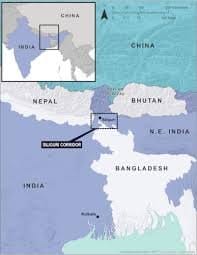
Introduction
Northeast India, a region of immense strategic significance, has long been plagued by insurgencies, ethnic conflicts, and cross-border tensions. While internal factors have contributed to instability, there have been consistent allegations of external interference by China and Pakistan. Various intelligence reports and security analyses suggest that these two nations have, at different times, provided direct or indirect support to insurgent groups operating in the region. The objective behind such covert operations appears to be weakening India’s internal security, disrupting developmental projects, and diverting military focus. This article explores the alleged roles of China and Pakistan in destabilizing Northeast India and the countermeasures adopted by the Indian government.
China’s Role in Northeast India’s Insurgency
Historical Context
China’s involvement in Northeast India’s insurgencies dates back to the 1960s. During the Sino-Indian War of 1962, China sought to extend its influence by supporting separatist groups in the region. The United Liberation Front of Asom (ULFA), the National Socialist Council of Nagaland (NSCN), and other insurgent groups reportedly received training, arms, and ideological guidance from China. Intelligence reports suggest that these groups were provided safe havens in China’s Yunnan province.
Recent Developments
Despite diplomatic engagements between India and China, reports indicate that China continues to indirectly support insurgent groups operating in the Northeast. Some key developments include:
- Arms Supplies: There have been instances where arms with Chinese markings have been seized from insurgent groups in Arunachal Pradesh, Nagaland, and Manipur.
- Training Camps in Myanmar: China allegedly backs camps in Myanmar, where militant groups train before infiltrating Indian territory.
- Intelligence and Cyber Warfare: Chinese agencies have been accused of funding misinformation campaigns to fuel ethnic tensions in the region.
Geopolitical Interests
China’s interest in destabilizing India’s Northeast stems from several strategic motivations:
- Countering India’s Influence: By fueling insurgencies, China attempts to keep India occupied with internal security challenges, reducing its ability to project power in the Indo-Pacific.
- Border Disputes: China lays claim to Arunachal Pradesh as “South Tibet.” Destabilizing the region helps justify its territorial claims.
- Disrupting Connectivity Projects: India’s Act East Policy, aimed at improving ties with Southeast Asia through the Northeast, is hindered by insurgencies and instability.
Pakistan’s Role in Northeast India’s Insurgency
ISI’s Covert Operations
Pakistan’s Inter-Services Intelligence (ISI) has long been accused of fomenting unrest in India, with a focus on Kashmir and the Northeast. Reports suggest that ISI has maintained links with militant groups such as ULFA and NSCN-K to create instability in the region.
Terror Networks and Radicalization
Pakistan-backed terror groups have been involved in:
- Providing Arms and Financial Support: ISI has reportedly supplied arms and funds to Northeast insurgents, often through intermediaries in Bangladesh and Myanmar.
- Terrorist Training: Intelligence sources claim that militants from the Northeast have received training in camps located in Pakistan and Afghanistan.
- Promoting Radicalization: There have been attempts to radicalize local communities and push them towards extremist ideologies, further fragmenting the region.
Objectives Behind Destabilization
- Creating Internal Instability: By supporting insurgencies, Pakistan aims to divert India’s military and intelligence focus away from Kashmir and other national security concerns.
- Strategic Coordination with China: Pakistan and China share a common goal of keeping India engaged with internal security challenges.
- Weakening India’s Economic Growth: Insurgencies deter investment, infrastructure projects, and economic growth in the region.
Impact on India
The covert operations by China and Pakistan have led to several challenges for India:
- Threat to National Security: Armed conflicts and cross-border insurgencies pose a direct threat to India’s territorial integrity.
- Economic Setbacks: Frequent insurgent attacks disrupt trade, investment, and economic development in the Northeast.
- Disruption of Infrastructure Projects: Projects such as roads, railways, and border connectivity suffer due to ongoing security threats.
- Humanitarian Crisis: Prolonged conflicts have led to displacement, loss of lives, and human rights violations.
Government’s Response
To counter these threats, India has adopted a multi-pronged strategy:
Diplomatic Initiatives
- Strengthening ties with Myanmar and Bangladesh to dismantle insurgent camps and cut off support routes.
- Engaging with China diplomatically to curb cross-border interference.
Military and Security Measures
- Enhanced Border Security: Deployment of additional forces and use of advanced surveillance technology along the Indo-Myanmar and Indo-China borders.
- Crackdown on Insurgents: Security operations such as “Operation All Clear” have targeted militant hideouts and their financial networks.
- Cyber and Intelligence Warfare: India has been improving its cyber defense mechanisms to counter misinformation campaigns.
Development Initiatives
- Infrastructure Projects: Improved connectivity through projects like the Bharatmala and North East Industrial Development Scheme (NEIDS).
- Employment Opportunities: Job creation programs to prevent youth from being recruited by insurgent groups.
- Political Integration: Encouraging peace talks and autonomy measures for better governance.
Conclusion
The covert operations of China and Pakistan in India’s Northeast present a significant challenge to national security. However, India’s robust counter-insurgency strategies, diplomatic outreach, and development initiatives are gradually reducing the impact of these threats. A combination of strong military preparedness, international cooperation, and inclusive development policies is key to ensuring lasting peace and stability in the region. The Northeast’s potential as a gateway to Southeast Asia can only be realized if external interferences are effectively neutralized.
India’s focus should remain on strengthening internal security, fostering regional integration, and maintaining diplomatic pressure on hostile neighbors to prevent further destabilization attempts. By addressing both the external threats and internal grievances, India can secure the Northeast and pave the way for sustainable development and national unity.
By BHARAT GLOBAL TIME





